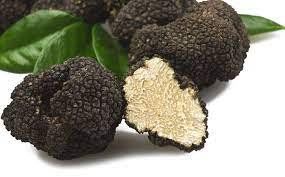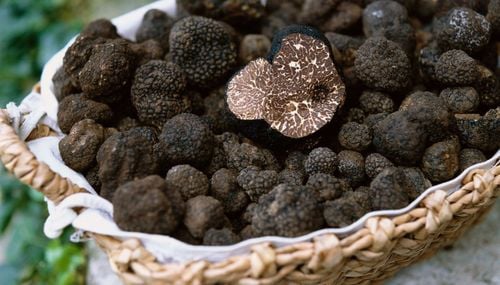This is an automatically translated article.
As an extra-root fungus, Truffle is often found in close association with plant roots. Truffle mushrooms have a huge ecological role in nutrient cycling and drought tolerance. However, growing truffles is difficult, so they are very expensive and cannot be stored for a long time.
1. What is Truffle Mushroom?
Truffles grow underground, in a symbiotic relationship, attached to the roots of specific trees, usually oaks and hazelnuts.
This is a mushroom that is appreciated by the food industry around the world. Truffles are eaten fresh or made into a variety of products, including pasta, honey and mustard. Truffles have an estimated shelf life of 3-4 weeks, but this can be extended through freezing.
2. Why are truffles expensive?
Truffle mushrooms grow underground near the roots and are very expensive, sometimes up to thousands of dollars per pound.
So why are truffles expensive? Accordingly, they are expensive because they are difficult to find, cannot be preserved for a long time, and especially difficult to grow truffles.
Although many species are found worldwide, the most prestigious and quality truffles come from specific regions, like the famous European wine, California.
Currently truffle growing areas are facing major agronomic challenges, as the mushroom grows only in a narrow range of weather conditions. Therefore, truffles are highly valued in culinary, culinary arts and delicacies.

Vì khó tìm, không thể bảo quản trong thời gian dài và khó trồng nấm truffle nên chúng có giá thành đắt đỏ.
3. How to grow truffles?
Truffle mushrooms are honored as rare culinary, they cannot be tamed, but only grow underground in the wild forests for several months each year.
Truffles can be grown on flat or relatively sloping soil but the right climate, soil and water are important factors for good production.
Truffle soil type Truffles require a free-draining soil with a high pH, around 8. Lime is typically used on soils with a pH of 6 or less to raise it to the required level. Soil may also need to be managed to regulate other micronutrient levels. Generally, soil analysis is recommended to determine soil characteristics and suitability.
Knowledge of suitable soil and climatic conditions for truffle growth is still being developed. Several truffles have been established where the soil and climate are deemed suitable, but have not achieved viable yields. Reasons for this failure include initial level of root inoculation, poor site selection, and ongoing management of the truffle orchard.
Climate for growing truffles Growing truffles is suitable for hot summers and cold winters. As a general rule, the average daily temperature is around 20°C. A cool climate is important for growth, while a cold winter is essential for mushroom maturation. Therefore, truffles produce good quality when the soil temperature drops through autumn and winter.
Minimum rainfall of at least 700mm per year is ideal for growing truffles. For example, good rain is required during the summer months for the fungus to thrive. Since soils are different, moisture retention rates are also different, so irrigation may be considered essential.
In addition, mushrooms need to be resistant to drought, provide good water. Both over-watering and under-watering can affect truffle yields, so careful consideration should be given to rainfall and the source of irrigation water.

Trồng nấm truffle thích hợp vào mùa hè nóng nực và đông lạnh giá.
4. How do you eat them?
Is a mushroom, but don't confuse it with mushrooms that you can fry, boil or bake. The cooking process can destroy the unique flavor and aroma of truffles. Chefs often grate fresh truffles over pasta, risotto or even eggs for a unique twist.
However, when fresh truffles are out of season, they will turn to year-round pantry products, such as truffle butter, salt and sauce.
In short, truffles are expensive because they are difficult to find, cannot be preserved for a long time, and especially difficult to grow. Although many species are found worldwide, the most prestigious and quality truffles usually come from certain regions.
Please dial HOTLINE for more information or register for an appointment HERE. Download MyVinmec app to make appointments faster and to manage your bookings easily.
References: Agrifutures.com.au, Foodunfolded.com













